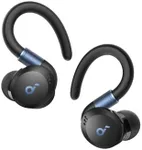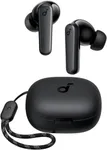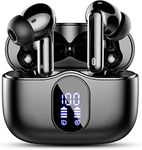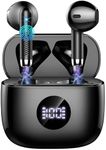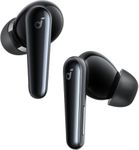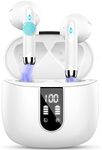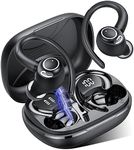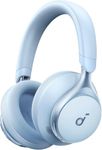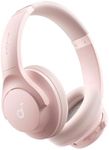Buying Guide for the Best Bluetooth Earbuds
When choosing Bluetooth earbuds, it's important to consider how and where you'll be using them. Whether you're looking for something to accompany you on your daily commute, enhance your workout sessions, or simply enjoy music at home, the right pair of earbuds can make a significant difference in your listening experience. Focus on the features that matter most to you, such as sound quality, comfort, battery life, and connectivity. By understanding these key specifications, you can make an informed decision that aligns with your lifestyle and preferences.Sound QualitySound quality is a crucial aspect of Bluetooth earbuds as it determines how well you can enjoy your music, podcasts, or calls. It is influenced by factors like the size of the drivers, frequency response, and codec support. Larger drivers generally produce better bass, while a wider frequency response can offer more detailed sound. Codecs like AAC, aptX, or LDAC can enhance audio quality over Bluetooth. If you're an audiophile or someone who values rich sound, look for earbuds with high-quality drivers and support for advanced codecs. For casual listeners, standard sound quality may suffice.
Battery LifeBattery life indicates how long the earbuds can be used before needing a recharge. This is important for convenience and uninterrupted listening, especially during long commutes or travel. Earbuds typically offer a range of battery life from a few hours to over 10 hours on a single charge, with additional charges available from the case. If you frequently use earbuds for extended periods, opt for models with longer battery life. For occasional use, shorter battery life may be acceptable, especially if the charging case provides multiple recharges.
Comfort and FitComfort and fit are essential for ensuring that the earbuds can be worn for extended periods without discomfort. This is particularly important for activities like workouts or long listening sessions. Earbuds come in various designs, including in-ear, on-ear, and with different ear tip sizes. Some models offer customizable tips or wings for a more secure fit. If you plan to use earbuds during physical activities, look for models with a snug fit and sweat resistance. For general use, prioritize comfort and choose a design that feels good in your ears.
Connectivity and RangeConnectivity and range refer to how well the earbuds maintain a stable connection with your device and how far you can move away from it without losing signal. Bluetooth version plays a role here, with newer versions like Bluetooth 5.0 offering better range and stability. A good range is important if you want to move around freely without carrying your device. If you often use earbuds in environments with potential interference, such as crowded areas, prioritize models with strong connectivity features. For home use, range may be less of a concern.
Noise CancellationNoise cancellation is a feature that reduces unwanted ambient sounds, allowing you to focus on your audio content. There are two types: active noise cancellation (ANC) and passive noise isolation. ANC uses microphones to pick up external noise and counteract it, while passive isolation relies on the physical design to block sound. If you frequently use earbuds in noisy environments, such as public transport or busy offices, ANC can be very beneficial. For quieter settings, passive noise isolation may be sufficient and can also help preserve battery life.
Durability and Water ResistanceDurability and water resistance are important if you plan to use your earbuds in various environments or during physical activities. Water resistance is indicated by an IP rating, which tells you how well the earbuds can withstand exposure to moisture and dust. A higher IP rating means better protection. If you intend to use earbuds for workouts or in the rain, look for models with a good IP rating. For everyday use in dry conditions, durability may be more about build quality and materials rather than water resistance.

